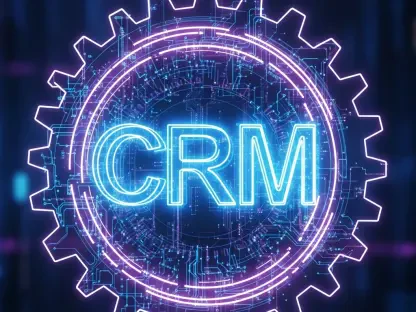As we dive into the world of digital marketing, I’m thrilled to sit down with Anastasia Braitsik, a global leader in SEO, content marketing, and data analytics. With her extensive experience across multiple agencies, Anastasia has honed the art of delivering impactful Pay-Per-Click (PPC) Quarterly Business Reviews (QBRs) that resonate with stakeholders. Today, we’ll explore her strategies for creating engaging and effective QBRs, focusing on crafting clear presentations, aligning content with audience needs, building compelling narratives around data, and driving forward-looking conversations that foster growth and alignment with clients.
How do you view the role of a Quarterly Business Review in strengthening the relationship between agencies and clients?
I see QBRs as a cornerstone of trust and transparency. They’re not just about reporting numbers; they’re an opportunity to show clients the value we bring and to align on their broader business goals. When done right, QBRs demonstrate that we’re not just executing campaigns but thinking strategically about their success. They also give clients a chance to voice their priorities, which helps us stay on the same page. A strong QBR can turn a transactional relationship into a true partnership by fostering dialogue and shared vision.
What are some common pitfalls you’ve noticed in QBRs, and how can they be avoided?
One of the biggest pitfalls is turning a QBR into a data dump. I’ve seen presentations where agencies just throw out metrics like click-through rates or cost-per-click without context, and it bores or confuses the audience. The key to avoiding this is to focus on storytelling—connect the data to the client’s goals. Another issue is poor pacing; spending too long on one slide kills engagement. Practicing the presentation and sticking to a brisk pace, like 30 to 60 seconds per slide, helps keep everyone’s attention.
How do you ensure that your QBR slides are visually clear and easy to digest for stakeholders?
Readability is everything. I prioritize strong slide titles that convey the main takeaway, not just the topic. For instance, instead of labeling a slide “Meta Ads Performance,” I’d title it “Meta Ads Boosted Conversions by 20%.” I also cut down on text by using bullets instead of paragraphs and highlight key stats with bolding or simple charts. The goal is to make slides skimmable so stakeholders can grasp the point instantly, even if they’re multitasking during a virtual meeting.
Why is it so critical to tailor QBR content to different types of stakeholders in the room?
Stakeholders have vastly different priorities. Your day-to-day contacts might care about campaign specifics, while executives are focused on high-level outcomes like revenue impact or progress toward annual goals. If you don’t address those differences, you risk losing half your audience. I always include an executive summary with achievements and next steps for higher-ups, while ensuring there’s enough detail in the deck for operational teams. It’s about speaking everyone’s language and showing relevance across the board.
Can you share how you build a narrative in a QBR to connect PPC metrics to a client’s larger business objectives?
Building a narrative is about making data meaningful. I start by identifying the client’s top business goals—say, increasing qualified leads. Then, every metric I present ties back to that. For example, if we improved cost-per-acquisition on a campaign, I’ll explain how that frees up budget to scale lead generation. I once worked with a client whose priority was down-funnel growth. Instead of highlighting a broad reach metric, we focused on how our PPC efforts improved their marketing-to-sales-qualified-lead conversion rate, directly impacting their pipeline. That connection made the results resonate.
How do you approach turning past performance into actionable steps for the future during a QBR?
I always frame results with a forward-looking lens. It’s not enough to say, “Here’s what happened last quarter.” Instead, I pivot to, “Here’s what we learned and what we’ll do next.” For instance, if average order value dropped, I’d highlight it as an opportunity to test value-based bidding strategies. I also address tactical needs—like requesting faster client feedback on priority initiatives—to ensure we can act on recommendations. This approach keeps the conversation proactive and shows we’re invested in growth, not just reporting.
What’s your forecast for the future of QBRs in the evolving digital marketing landscape?
I think QBRs will become even more strategic as digital marketing gets more complex. With advancements in automation and AI, clients will expect agencies to focus less on manual reporting and more on insights and innovation. We’ll see QBRs evolve into collaborative workshops where we brainstorm solutions in real-time, rather than just presenting data. Personalization will also be key—tailoring content not just to roles but to individual stakeholder preferences. Ultimately, QBRs will be less about looking backward and more about shaping the future together.









